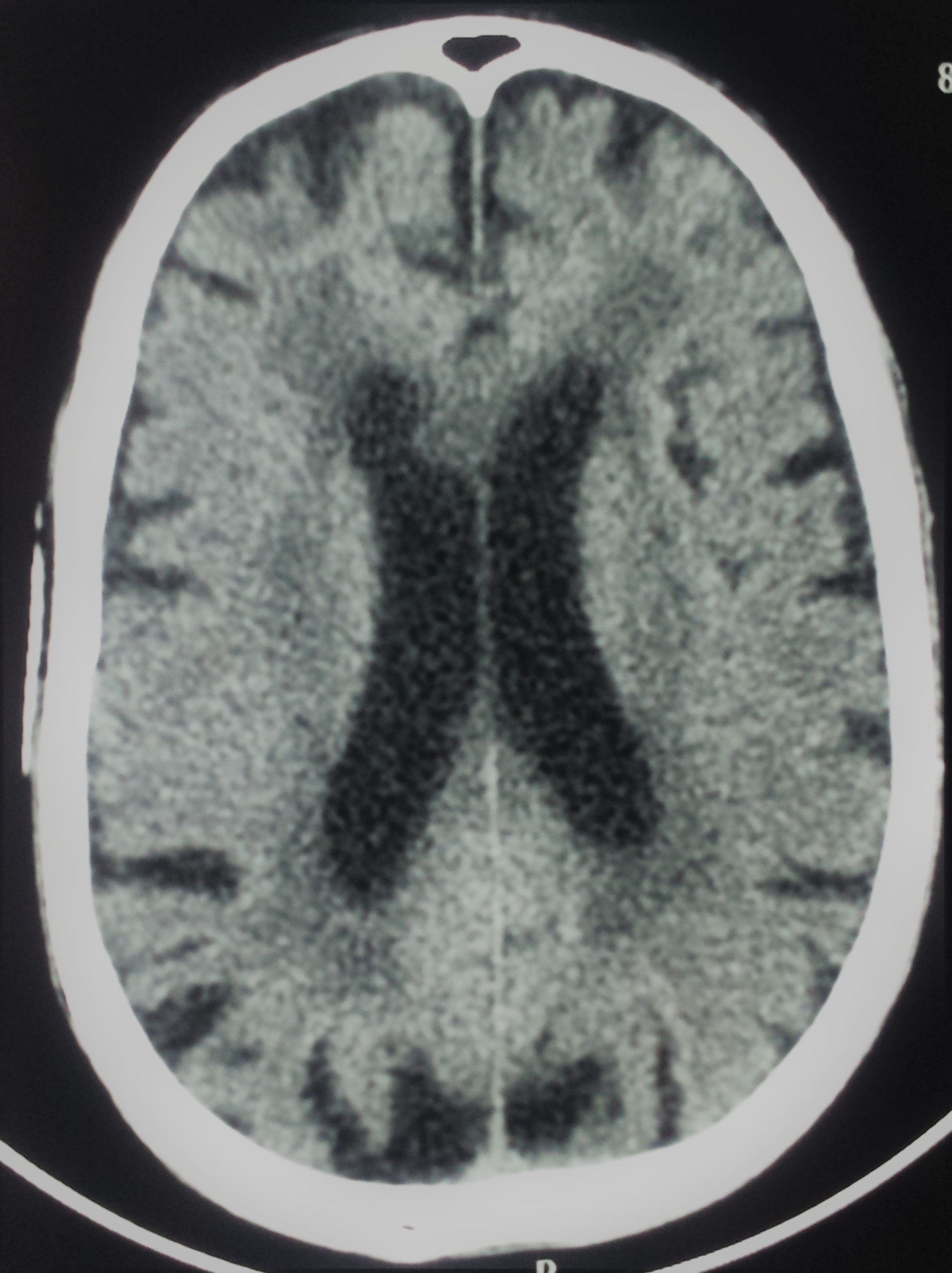Session Information
Date: Thursday, June 8, 2017
Session Title: Other
Session Time: 1:15pm-2:45pm
Location: Exhibit Hall C
Objective: The aim of this study is to present a case of right hemiballism due to an ischemia located in the left lentiform nucleus.
Background:
Hemiballism is a rare clinical manifestation of ischemic stroke located in basal ganglia. Many studies have been done on post-stroke movement disorders worldwide but few of them have been conducted in sub-Saharan area particularly in Senegal [1].
Methods: It is a case report of a patient admitted in the neurology department of Fann national teaching hospital in Dakar, Senegal. He was received in out-patient department on May 9th, 2016 and A Brain CT-scan and others exams were done to find an etiology. The patient was informed and gave his consent for this presentation.
Results:
We therefore present a man of 71 year’s old living in Dakar with past history of high blood pressure known since three years. He has presented one week prior to consultation a brutal onset of abnormal right side movements especially of the arm which disappeared when the patient was sleeping. Clinical exam revealed involuntary, repetitive and non-stereotyped rapid movements with a large amplitude of the proximal part of right limbs considered as right side hemiballism associated to a right Babinsky’s sign. The blood pressure was 160/110 mmHg. The brain CT scan shown lacunar infarcts of left lentiform nucleus and internal capsule associated to cerebral cortical and subcortical atrophy with leukoaraiosis. Biological exams revealed high LDL cholesterol (1.80 g/l) and high total cholesterol (2.60 g/l). Cervical arteries Doppler ultrasound done showed bilateral carotid atheromatous plaque with left predominance. EKG and Trans-thoracic cardiac ultrasound revealed left ventricular hypertrophy. The other exams done were non-contributive. The patient received Haloperidol, low dose Aspirine, Captopril and lipid lowering therapy (Statin and diet). The evolution was is slightly favorable by the decreasing of these movements, blood pressure control and lowering of LDL cholesterol (last control = 1.10 g/l). The patients is actually followed up in the post-stroke consultation and we had low dose of Trihexyphenidyl in the treatment to prevent some side effects of Haloperidol.
Conclusions:
Hemiballismus is a severe type of movement disorders which is difficult to manage by current medication [2]. It is therefore important for neuroscientist to consider combination of therapy such as drugs and neurostimulation to improve to quality of life of patients.
References: 1. Siniscalchi A et al. Post-stroke Movement Disorders: Clinical Manifestations and Pharmacological Management. Current neuropharmacology, 2012, 10, 254-262. 2. Aleksandar Ristic et al. Long-Term Prognosis of Vascular Hemiballismus. Stroke. 2002; 33: 2109-2111.
To cite this abstract in AMA style:
D. Gams Massi, J. Nyassinde, K. Toure, N.S. Diagne, M. Ndiaye, A.G. Diop, M.M. Ndiaye. Vascular hemiballismus due to a lentiform nucleus infarct [abstract]. Mov Disord. 2017; 32 (suppl 2). https://www.mdsabstracts.org/abstract/vascular-hemiballismus-due-to-a-lentiform-nucleus-infarct/. Accessed March 29, 2025.« Back to 2017 International Congress
MDS Abstracts - https://www.mdsabstracts.org/abstract/vascular-hemiballismus-due-to-a-lentiform-nucleus-infarct/

